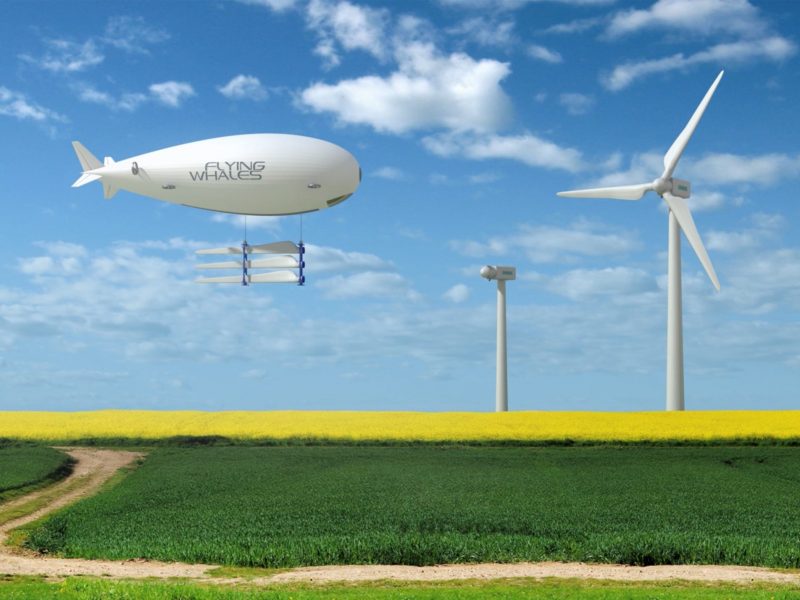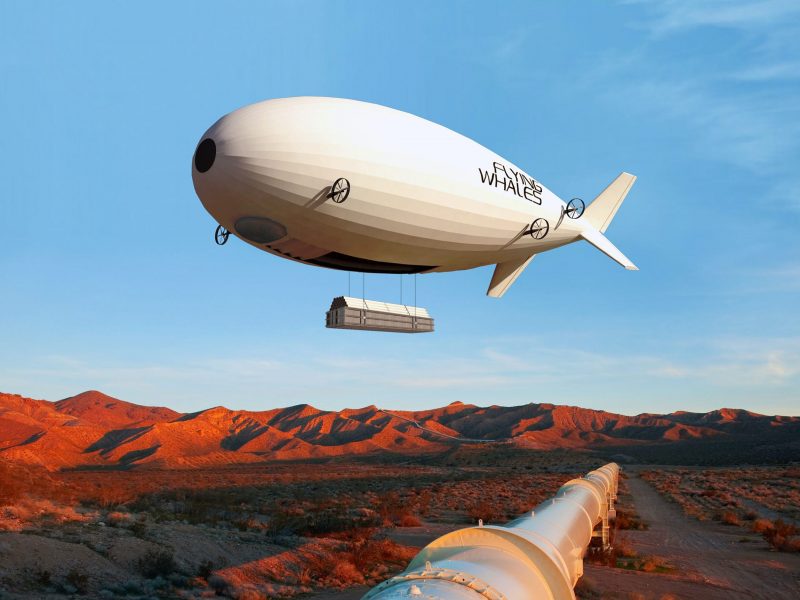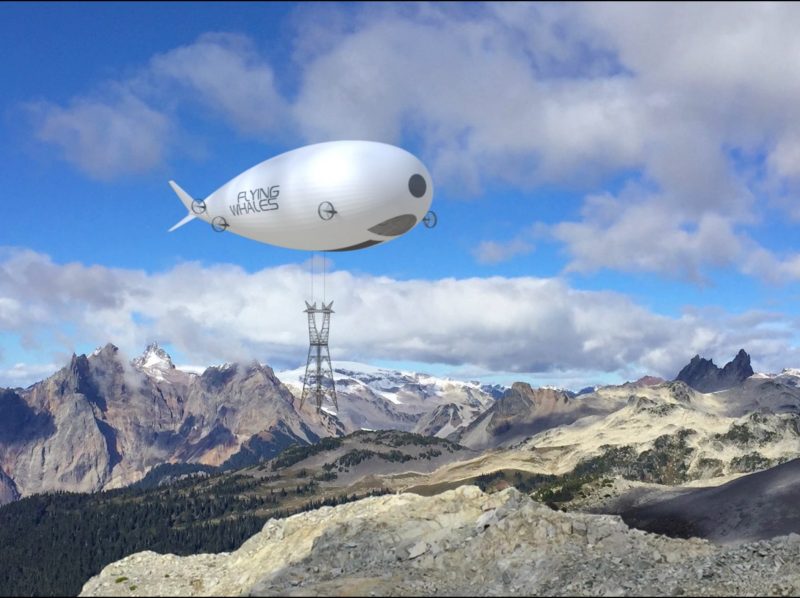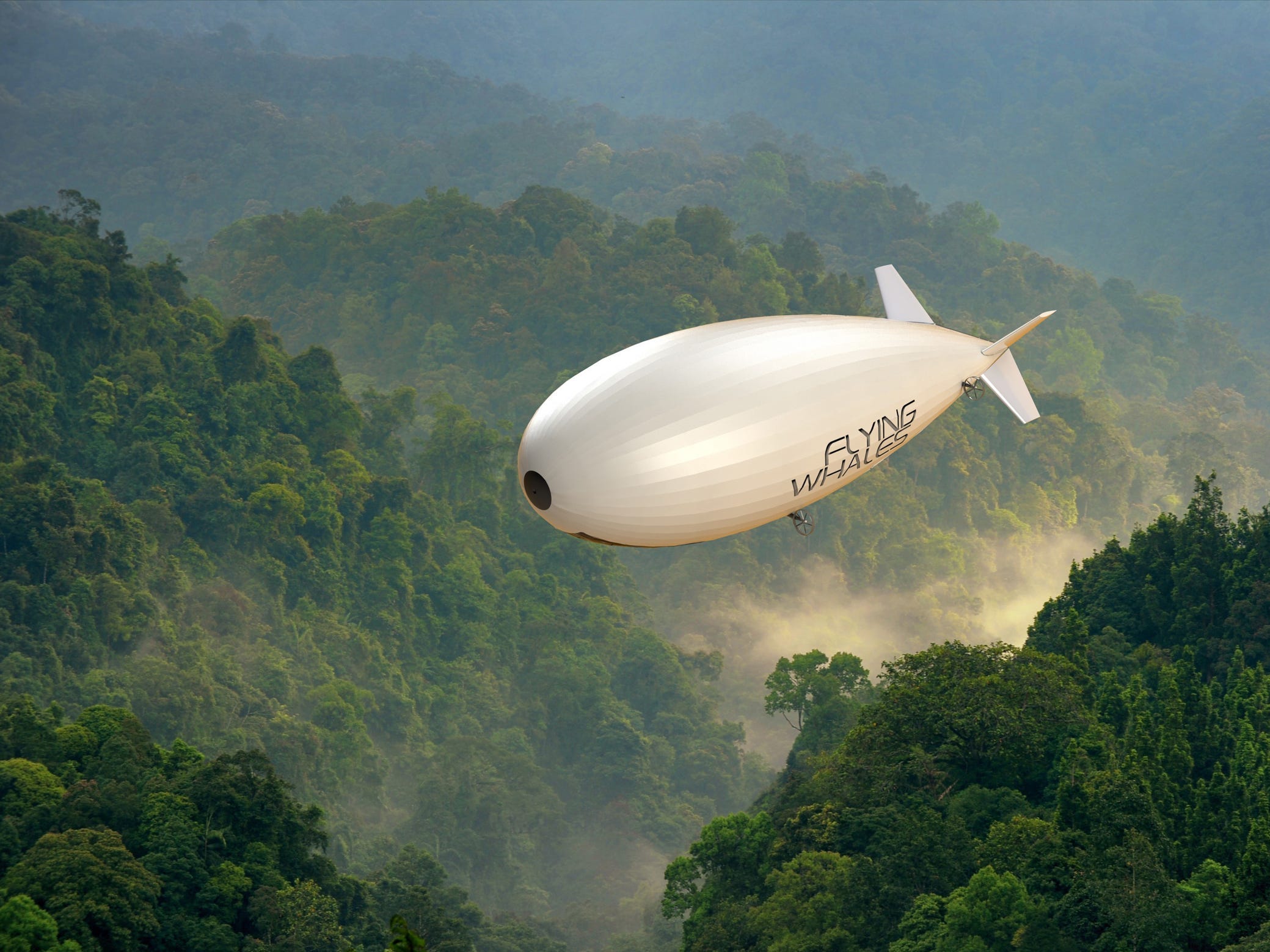- France-based Flying Whales is developing an environmentally friendly cargo transport aircraft with commercial production posied to begin in 2025.
- The LCA60T airship can off-load its up to 66-ton payload mid-air.
- Because the LCA60T is a VTOL, it won’t require any extra infrastructure to operate, allowing it to serve more remote locations without harming the environment.
- Visit Business Insider’s homepage for more stories.
Flying Whales is producing a blimp-like aircraft that can transport and drop off cargo mid-flight.
Several components of the cargo transport airship are made to be environmentally friendly, such as its floating capabilities powered by helium, hybrid-electric propulsion system, and lack of need for extra infrastructure during take-offs and landings.
But don’t get confused by its oblong shape and helium-powered floating capabilities: the LCA60T is rigid and can’t be “deflated”, setting it apart from the traditional blimp despite its exterior appearance.
The aircraft was originally designed to transport wood logs around inaccessible areas by creating an airship that didn’t need infrastructure support. However, the France-based team quickly pivoted to a larger, less targeted client base, the team told Business Insider.
"We realized that this solution could be used in a lot of other sectors, so the [later] goal was not to make something that was only able to work for wood transport," Romain Schalck, marketing manager for Flying Whales, told Business Insider. "But we wanted to start with something because it's, generally speaking, easier to start designing something to answer a specific market."
In terms of other iterations, Flying Whales is currently working with both state and private financial supporters and clients across various industries in Europe, Asia, and Canada, with plans to eventually expand to the US as the team grows in the future.
As of right now, one of the company's biggest investors is the Aviation Industry Corporation of China (AVIC). The same year AVIC first called Flying Whales (2017), the company also received an investment from the French state of around $29.5 million, according to Schalck.

Around then, the company started expanding from its team of five to six people, to 50 employees.
Now, Flying Whales has over 130 employees with plans to expand even more when the group starts shifting from an engineering to an industrial company, which will come when it's ready to start physically producing the airships.
"Maybe at the end of the program development, we will be close to 300 people in the design office," Pierre-Yves Fouillen, market manager at Flying Whale, told Business Insider. "Once we start to operate the airships, the number of employees will just explode."
Flying Whales plans to build its first factory in France in the coming year with the goal of having the first LCA60T in the air by 2024.

Commercial production is poised to begin in 2025, and the final goal is to make over 162 LCA60Ts in the first decade of production.
As of now, the price of the aircraft is confidential, but according to the Flying Whales team, its tag is closer to that of a helicopter than a plane.

The company also plans to develop an "ownership operator" segment of its business that will allow clients to use the airships for short-term projects instead of having to purchase an entire unit just for one mission.
The rigidity of the structure that sets the LCA60T apart from a blimp is its "multilayer envelope technology," which uses several thin layers of textile fabric panels — similar to that of an inflatable boat — over the actual structure, according to Schalck.

And since the air vehicle uses helium to hover, the LCA60T has a low fuel consumption compared to traditional aircrafts.
The airship can also load and remove cargo while hovering, which is done by employing winches that are controlled by a "loadmaster."

Despite its 66-ton payload, the LCA60T can carry objects of any size or shape by using slings that hang under the aircraft, although there's also a cargo holding area inside.
The LCA60T can cruise at around 62 miles-per-hour with the aim of doing "short" - within around 124 to 186 miles - trips.
The LCA60T has vertical take-off and landing capabilities, which means additional infrastructures like runways won't be needed just to operate the aircraft.

According to Schalck, the lack of any extra infrastructure means remote areas can be accessed without harming the environment.
The hybrid electric propulsion system that powers the airship also gives Flying Whales the opportunity to then shift to full electric propulsion in the future, further decreasing the airship's carbon footprint.
"We decided to equip the first airship with a hybrid propulsion first because we think today, we are in a world in which we cannot create new industrial tools without taking into account the protection of the environment," Schalck said. "A hybrid electric propulsion is not the perfect saver for the environment, but it's a good first step."

